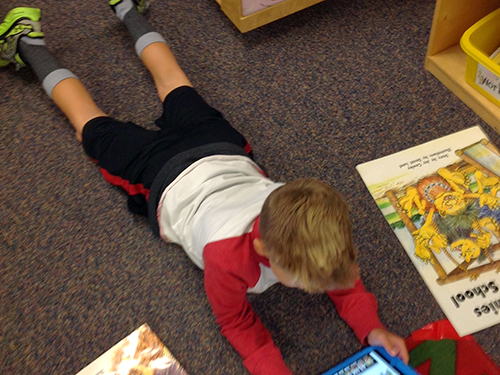Chapter 1: Transitioning Toward Digital Literacy
1.8 Living as Digital Citizens
Often when speaking with groups of educators I’m asked, “What’s different? What has changed?” Honestly, I still find it hard to articulate the differences as I moved from bringing my digital life and learning into the classroom for students.
As I’ve made this journey I have found a process that works for me and then transferred this understanding to my students. I’ve always chosen to take one step at a time. To others I think it often looks like I am taking more than one step at time, but often in reality I take one step and my students run eight steps ahead, and then I race to catch up. In the beginning, the first step I chose to take in my classroom was to introduce blogging. It was linear. It was a lot like writing. It was manageable. It felt safe. I chose a space, Kidblog, and we began. It was interesting as students got comfortable with blogging the impact it had our classroom. The voices of quiet students seemed to equalize, and in many cases grow stronger. Students were permitted to choose their topics and write anytime. I found students often choosing to write from home. I learned things about them I don’t think I would have known without this opportunity to blog.
The change that still sticks with me the most, however, was the change in community. Though I have tried to work hard to change this, I have often felt that students see me as the go between in conversations. You say it to Mrs. Mere. She repeats it to the class. Then it is heard. I’ve never liked this kind of dynamic, and have worked to teach young learners to talk to one another. They can teach each other many things I cannot. This is going to sound strange, I suppose, but when we started blogging that changed. I noticed they didn’t always feel like I had to hear something. They didn’t always feel like I needed to be the person to say something. They started talking to each other, going to each other, and listening to each other. I didn’t feel as necessary, and I loved that.
That’s how it has been in this digital transition. I started with my own digital learning, realized the opportunities my students needed, and then shared it with students. In this digital transition there has been a true shift in ownership. As educators we often throw around words like authentic, ownership, voice and choice. We say we are working for purpose and audience, but often those purposes and audiences have been limited to the classroom community. We say reading workshop, writing workshop, and shared reading like they mean the same thing in every classroom, but they don’t.
For me, I felt like ownership, authenticity, and choice were truly beginning to shift. I felt like conversations around audience and purpose were truly about that. As I grew in my knowledge of digital literacy, I began to open new doors for students. In response, students pushed my thinking about what was possible. There’s no magic to what I am doing, but there is a willingness to take chances. Digital literacy isn’t really optional. It’s a part of our lives, and as teachers of literacy we owe it to our students to help them to thrive in the world in which we live.
